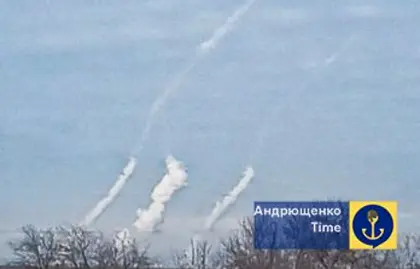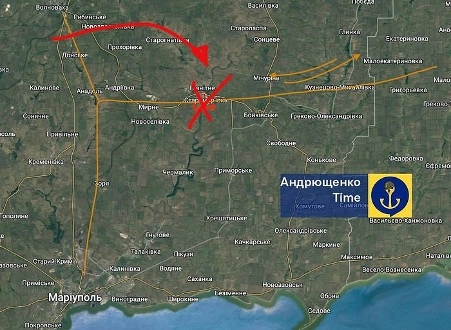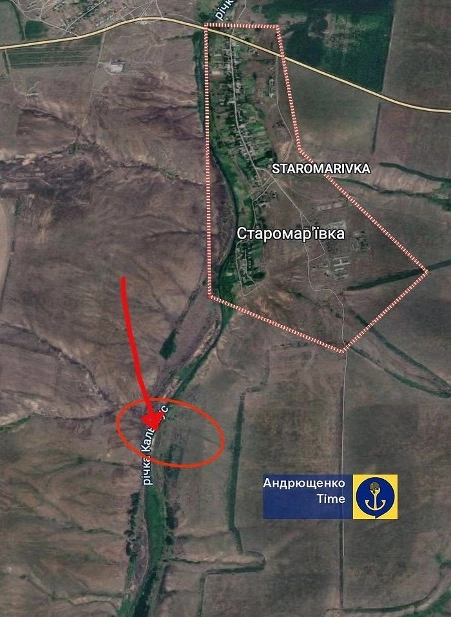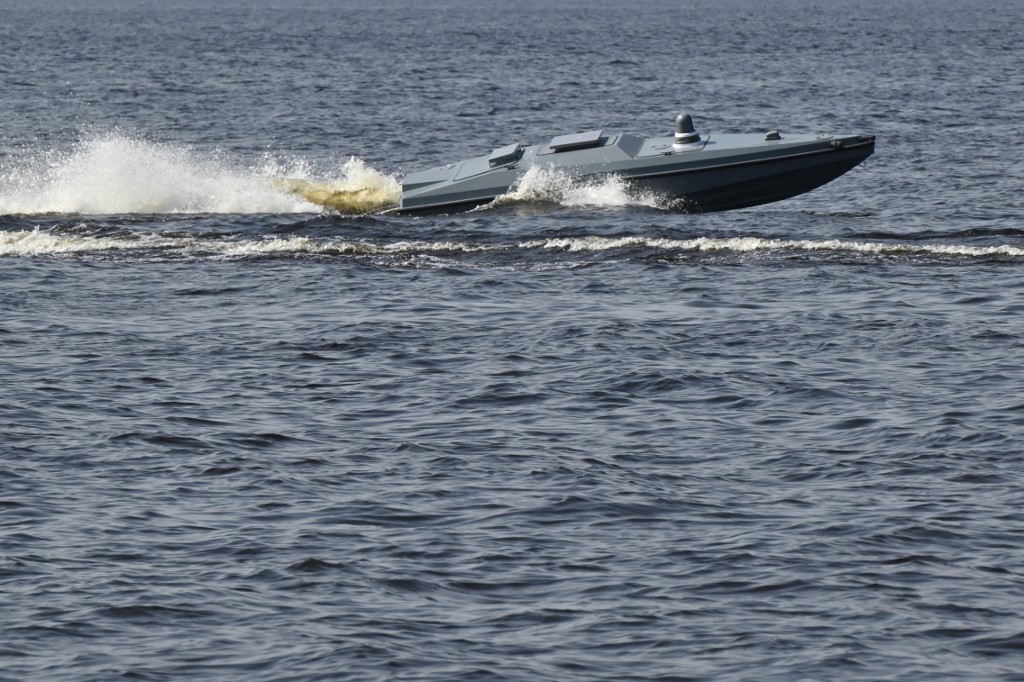This post might possibly be interesting to former OSCE buddies who patrolled out of Mariupol before the big war. But for the more general reader, also, my intent here is to flag a development that I’m guessing points the way we will see the fighting go in coming months.
According to Saturday news reports the Armed Forces of Ukraine (AFU), using means not specified in those reports but most likely HIMARS rockets or (less likely) JDAMS bombs or Hrim-delivered missiles, knocked down a railroad bridge the Russians were building, or maybe had just built, over the Kalmius River near the Donetsk region town of Hranitine.
JOIN US ON TELEGRAM
Follow our coverage of the war on the @Kyivpost_official.
In the pre-war days, as former members of the OSCE mission with field experience in the Mariupol sector will recall, the town of Hranitne and its severed road bridge across the Kalmius were a regular stop for OSCE patrols.
The Kalmius at the time was the “very front edge” of the line of contact following Russia’s first invasion of Ukraine.
Hranitne on the Kalmius River found itself in the news in August 2023 as the site of a Russian initiative to improve their logistics on the west side of the Kalmius, meaning delivering beans and bullets to troops fighting in places like Kurahove and Vuhledar, by constructing a railroad bridge across the river near the town.
Those of you who have patrolled there recall it has a rail spur that, before Russia invaded Ukraine the first time, was used to ship granite from a quarry nearby. The terrain is on one of the tallest rolling hills in the entire countryside – a man standing on the ground can see four to six kilometers in some directions.

ISW Russian Offensive Campaign Assessment, January 3, 2025
I personally don’t know the exact location of the bridge but the Ukrainian internet has some strong theories, attached.
According to an August CNN report citing our good friend Petro Andriushchenko, an adviser to the exiled mayor of Mariupol and a long-time Ukrainian public spokesman for matters involving that city, Moscow’s idea was (and is) to create a continuous rail line running Mariupol-Aslanove-Kalchyk-Volnovakha, and connected directly to Taganrog and Rostov-on-Don.”
Andriushchenko at the time noted the very obvious operational point that, once that rail line started functioning, Russia would be able to transport military and civilian supplies to occupied territory in southern Ukraine without relying on the Crimea bridge.
The problem with this excellent and fairly rational Russian supply plan was, to us digital generals, equally obvious: Hranitne is about 65 km rocket flight from Vuhledar. What’s more, Vuhledar is firmly in Ukrainian hands despite the Russians piling up burnt vehicles and corpses there in futile attacks there literally since last February, and Hranitne was a frontline town in 2014–2021.
Anyone wishing to poke fun at Russian army decision-making, would probably see a major Russian military engineering effort throwing a rail bridge over a river fully in range of Ukrainian precision-guided munitions, adjacent to a Ukrainian town the Russians had been mortaring and firing machine guns into for the last eight years, as less than brilliant planning.
Those of you biased against the Kremlin might even see an AFU sense of humor and timing in waiting a full five months of bridge construction, before smacking down the bridge and putting the Russian bridge-builders back to square one. But that would be biased…
Those of you familiar with Russian miliary contracting, particularly those of you who think corruption is everywhere and being cynical is cool, might well point out, who cares, the point inside the Russian decision-making process was that resources got spent and pockets got lined building the bridge, and the bridge’s destruction will just enable the contractors and corrupt Russian government officials getting filthy rich from the war, to keep pouring a money flood they can skim from into the gravy train. (Sorry about the mixed metaphors, been on vacation, writing discipline is a little ragged.)
Those of you familiar with US domestic politics will doubtless anticipate the Beltway implications: Either those HIMARS rockets costing probably 150K a pop were a gross waste of US taxpayer money and it’s very much in the US national interest to let the Russians build the damn bridge so they can kill Ukrainians more efficiently, or, here we see the Arsenal of Democracy incarnate delivering precision-guided superpower influence exactly like the smart guys in the White House and the Pentagon planned, and guess what neither a single civilian nor the environment was harmed in the explosions!
Or, even more likely, that the Ukrainians just shot a hole in a major Russian logistics initiative, and set back almost a half year of serious Russian supply planning, will just never get reported so the Smart People inside the Beltway won’t bother even trying to spin it one way or another.
The observation that I would make is, sitting in Kyiv under gray skies on a no-missile day, it looks to me what happened to the Hranitne rail bridge could well be a reasonable snapshot of one piece of what to expect from the war in 2024. We are going to see the Russians commit resources, big resources, to establishing control and “stabilizing” occupied territories, or at least simulating those conditions sufficient to claim in state media Russia has won the war and Ukraine can’t do anything about it.
At the same time, we are going to see the AFU attack those Russian stabilization efforts selectively but effectively, basically because they can, and those attacks will have downstream real war effects. At home, in Ukraine, even if news of this smacked bridge is unlikely to make the British or French media, never mind the US’, it will be reported widely in Ukraine, and so the disconnect between how the Ukrainians think they are doing fighting the Russians, and how their allies see it, will widen a little more. People who can’t figure out why Ukraine hasn’t given up already, are going to be more confused.
In the case of the Hranitine blown bridge, of course, on the battleground itself, the really critical effect is that for the Russian troops that have been piling up the bodies and burnt vehicles around Vuhledar, their logistics situation, which might have improved, remains unchanged. Meaning that the next time Russian commanders launch a new attack in that sector, they will once again roll dice to see if the troops — you know, the poor saps that pay the price in blood if Russian army logistics are poor — will in fact follow orders.
I am beginning to wonder how long the Russian leadership can keep rolling those dice without coming up snakeyes. Medium-term at least, it looks to me like Ukraine’s war strategy is to bet that can’t go on forever.
The views expressed in this opinion piece are the author’s and not necessarily of Kyiv Post.
The full version of this post was originally posted on Medium which you can read here.
You can also highlight the text and press Ctrl + Enter








